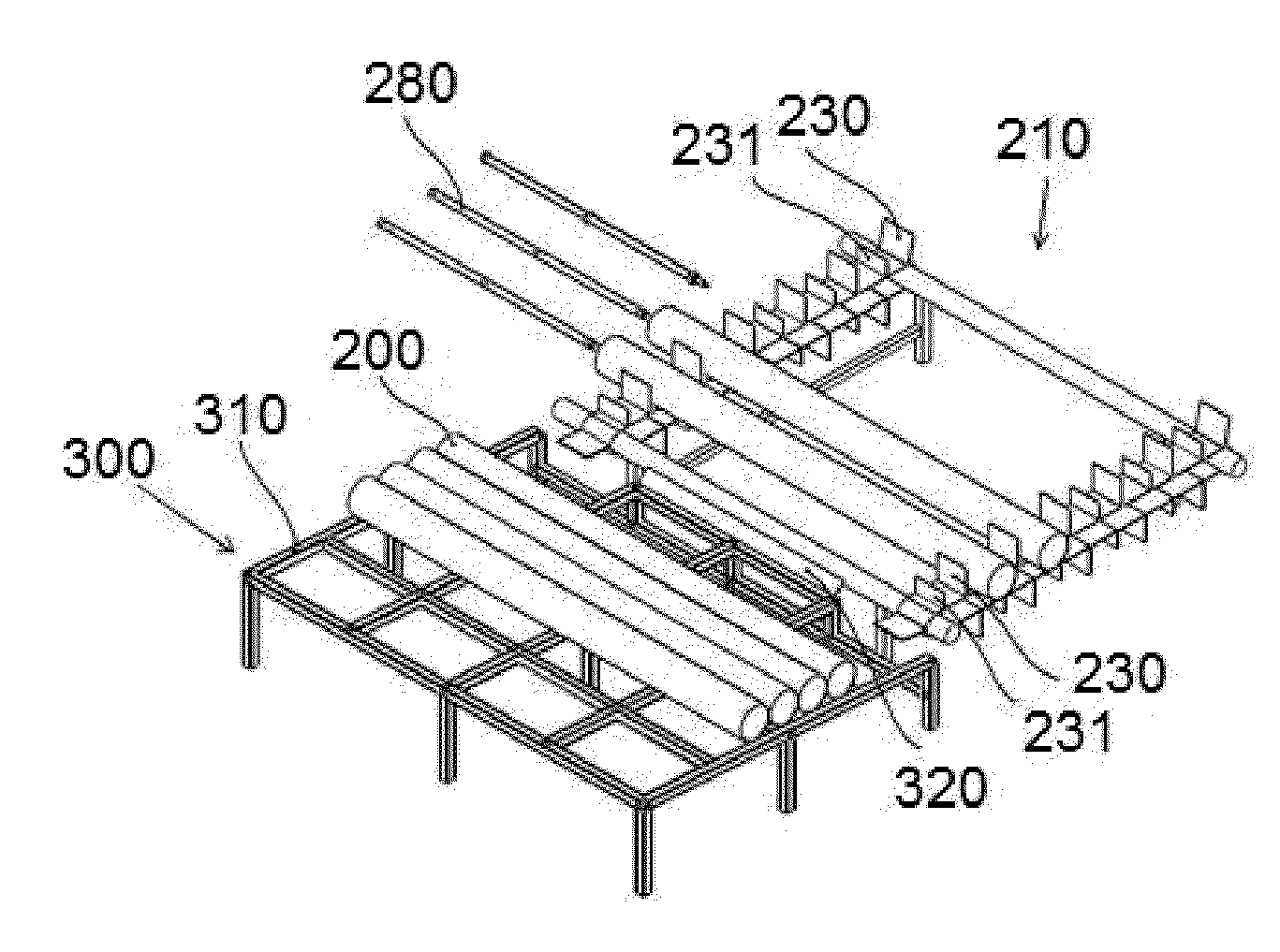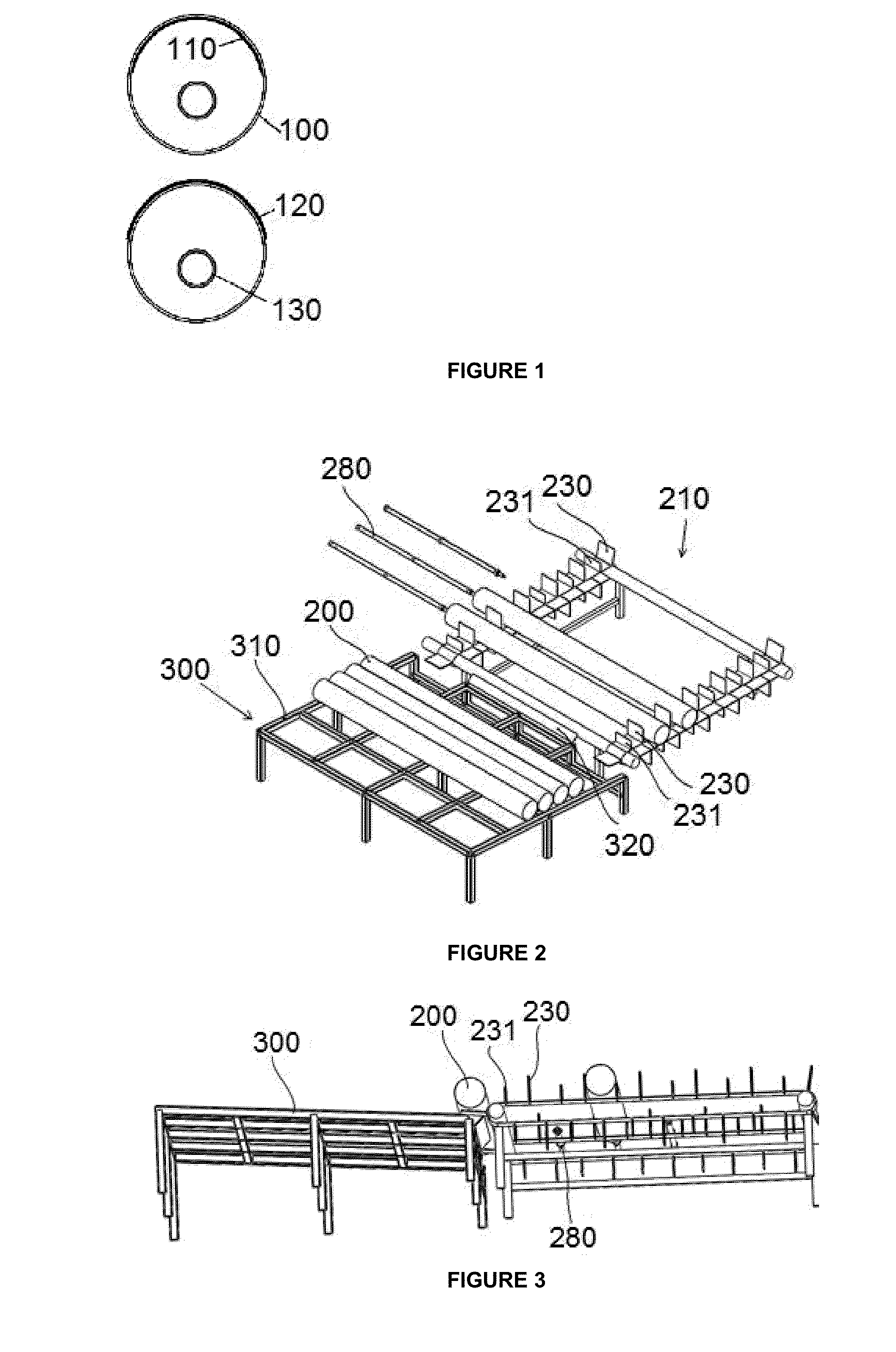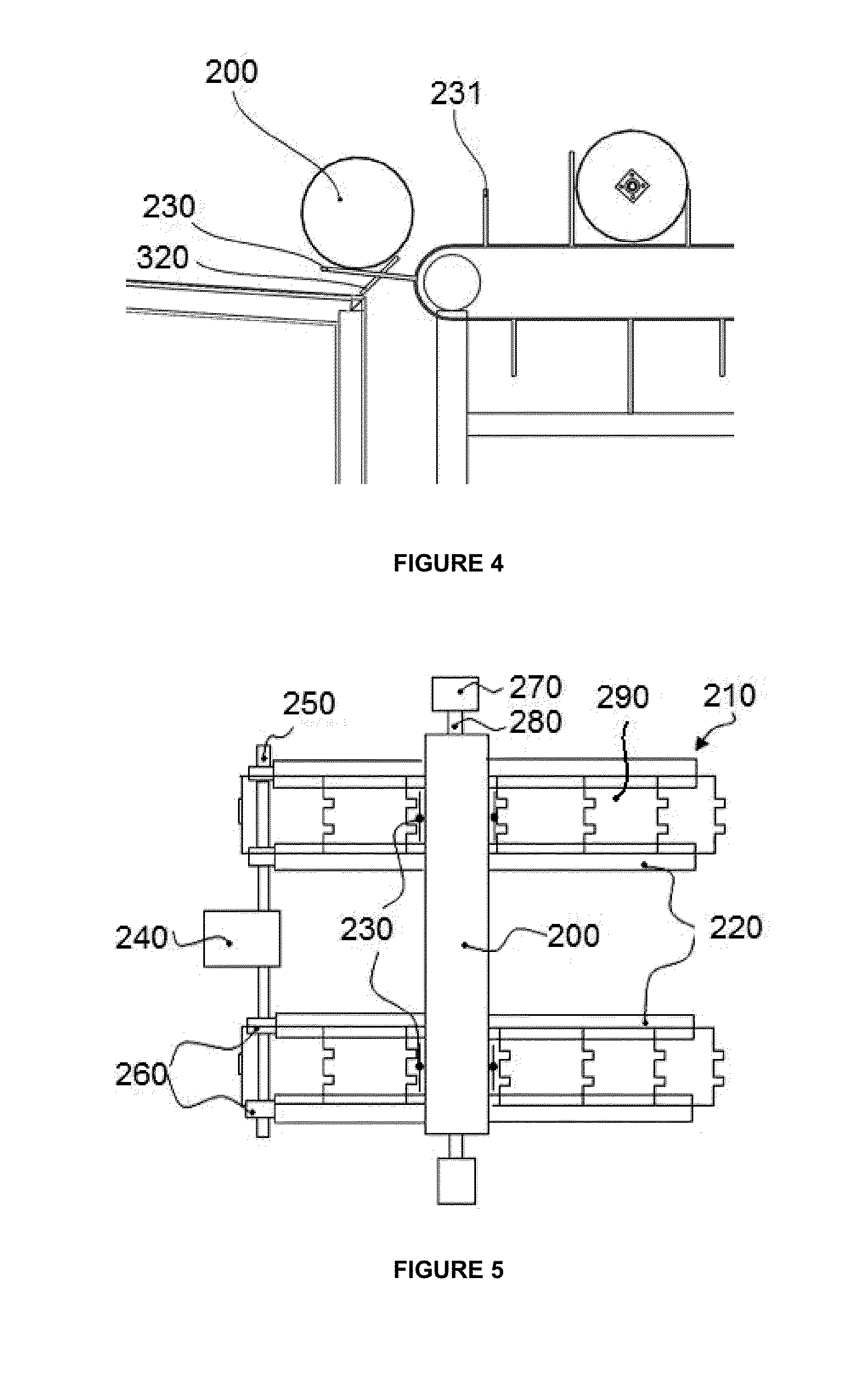Working method for a system for partial mirroring of glass tubes, and said system
- Summary
- Abstract
- Description
- Claims
- Application Information
AI Technical Summary
Benefits of technology
Problems solved by technology
Method used
Image
Examples
Embodiment Construction
[0014]The present invention relates to a working method for a system for mirroring for glass tubes for the application of a reflective metal layer by means of chemical spray deposition on the internal and / or external surface of the tube.
[0015]As commented above, the main application to be given to the tube is to be used as the external tube of a solar collector receiver incorporating a secondary reconcentrator. The reflective layer of the mirror with which part of the tube is desired to be coated is the secondary reconcentrator.
[0016]Taking into account the function to be performed by the tube, the reflective layer is to be deposited along the glass tube and only in the middle or part of the perimeter of the tube. The entire tube is not mirrored to allow the entry of solar rays through the non-mirrored surface. The reflective surface reflects the concentrated incident solar rays and redirects them towards the absorbent tube so that it absorbs a larger amount of concentrated rays, di...
PUM
| Property | Measurement | Unit |
|---|---|---|
| Temperature | aaaaa | aaaaa |
| Temperature | aaaaa | aaaaa |
| Fraction | aaaaa | aaaaa |
Abstract
Description
Claims
Application Information
 Login to View More
Login to View More - R&D Engineer
- R&D Manager
- IP Professional
- Industry Leading Data Capabilities
- Powerful AI technology
- Patent DNA Extraction
Browse by: Latest US Patents, China's latest patents, Technical Efficacy Thesaurus, Application Domain, Technology Topic, Popular Technical Reports.
© 2024 PatSnap. All rights reserved.Legal|Privacy policy|Modern Slavery Act Transparency Statement|Sitemap|About US| Contact US: help@patsnap.com










